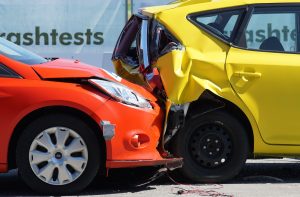 13% of all American motorists were uninsured as of 2015, even though it is a requirement in most states.
13% of all American motorists were uninsured as of 2015, even though it is a requirement in most states.
If you get hit by someone who does not have insurance, you could end up paying for expenses like medical bills, car damages, and car rental yourself. You may need to sue the driver. If, however, they don’t have insurance, the chances are high that they don’t have much in terms of assets either.
Some states, such as New York, North Carolina, and Vermont, require drivers to carry uninsured motorist coverage. This protects you against damages if you get hit by an uninsured driver. It also covers hit-and-run accidents.
Underinsured driver coverage is slightly different. It kicks in when the driver who hit you has liability coverage, but it is too low to cover your damages. This may happen in states that require low liability limits.
While uninsured and underinsured motor coverage laws vary by state, it is in your best interest to carry uninsured motorist coverage. Here’s why.
Uninsured Motorist Coverage
Like collision coverage, uninsured motorist coverage protects your car in case it gets hit by another vehicle.
Unlike collision coverage, however, uninsured motorist accidents do not usually cause your premiums to rise.
They are seen as the result of a not-at-fault accident. Collision claims, however, are always seen as at-fault claims by your insurance companies. Some discrepancies may apply.
The cost of uninsured motorist coverage may only be a few extra dollars a month, but it could change your life drastically. The exact premium will depend upon your age, location, an vehicle value.
If your state does not require it, you may want to consider purchasing uninsured motorist coverage. Especially if your state has a lot of uninsured drivers. You may also want to consider it if your state has low liability limits and you own a valuable vehicle.
You may want to purchase uninsured motorist coverage if you often park in a location where a hit-an-run is possible, or rather more likely. It also protects you if you get hit by a car as a pedestrian. If you are leasing your car, your bank or dealership may strongly recommend or require purchasing uninsured driver coverage.
Types of Uninsured Driver Coverage
Uninsured Motorist Bodily Injury Coverage (UMBI) is the most common type of uninsured driver coverage. This kicks in if you sustain bodily harm when you get hit by an uninsured or underinsured driver. In some states, the protection may extend to a family member who is driving the car, or to your passengers.
UMBI does not have a deductible, and it covers medical expenses and lost wages if you get hurt. It may even help pay for rehabilitation and funeral costs.
Uninsured motorist property damage (UMP,) covers property damage when your car gets hit by an uninsured driver.
UMBI is considered the most important type of uninsured driver coverage. In states where uninsured driver coverage is mandated, some only require UMBI. In these states, UMBI gets referred to simply as “uninsured motorist coverage.”
In most states, UMBI and UMP get sold separately. You may get a policy such as 25/50, which will cover $25,000 worth of bodily harm, and a total of $50,000 worth in damages.
Stacked coverage will increase your coverage to the number of cars you insure. For example, if you insure three cars for $10,000 each, you may be able to get a full $30,000 worth of coverage if you are hit by an uninsured driver. Premiums for stacking coverage may not be available in every state.
Other Types of Insurance Coverage
While other types of coverage are available, Uninsured Motorist Coverage will give you more robust coverage if an uninsured person were to hit you.
Disability will cover the medical bill and lost wages if you were to sustain an injury, illness, or disability. Uninsured Motorist Coverage, however, can help you cover your wages until disability kicks in, which will usually take about ninety days.
Personal Injury Protection (PIP) is required in some states. This will pay for your medical bills, and those of your passengers, if you are in an accident.
PIP applies if you get hit by an uninsured driver, but the rates are unusually low. Uninsured motorist insurance will pay for any additional medical expenses that PIP does not cover.
Determining Your Car Insurance Premium
Insurance companies have underwriters who will do a risk analysis to determine the premium due on your policy. The premium can vary depending upon your age, gender, years of driving experience, number of accidents, and moving violation history.
The terms of insurance are usually from six to twelve months, and they are renewable.
Filing A Claim
When you are in an auto accident that is not your fault, you can file a claim with your provider. They will then contact the other driver’s insurance for payment.
If the other driver does not have enough insurance to adequately cover your expenses, the underinsured policy will kick in up to your policy amount.
Some insurance companies have limits on how long you can wait before filing your uninsured motorist claim. Be sure to keep copies of evidence of any medical care received and auto repair needed as a result of the accident.
Get Covered
A typical car insurance policy may not be sufficient to cover your damages in the event that you are in an accident with an uninsured driver. Uninsured motorist coverage is the only way to make sure that you can cover your medical and car repair bills if the at-fault driver does not have sufficient insurance.
Contact us for a review of your auto insurance or other personal insurance or get a free online quote today.
